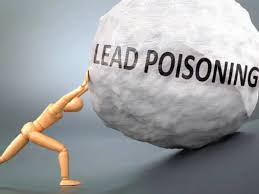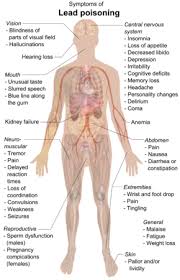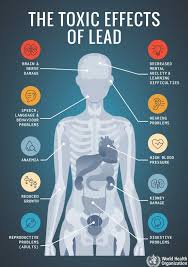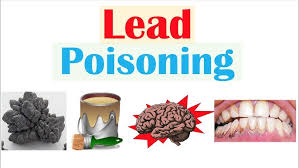Lead Poisoning: A Comprehensive Overview 
Lead poisoning is a serious and preventable health condition that occurs when lead, a toxic metal, accumulates in the body. It can have severe consequences, particularly for children, pregnant women, and fetuses. Understanding lead poisoning involves examining its causes, sources, symptoms, diagnosis, treatment, and prevention strategies.
Understanding Lead Poisoning
Lead is a naturally occurring heavy metal that has been used in various products and applications for centuries. However, lead is highly toxic, especially to the nervous system, and can cause significant health problems. Lead poisoning occurs when lead is ingested or inhaled in sufficient quantities, leading to toxic effects on various bodily systems.
Sources of Lead Exposure
Lead can be found in a variety of environments and products, including:
- Lead-Based Paint: One of the most significant sources of lead exposure, especially in homes built before 1978 in the United States when lead paint was banned. Children can ingest lead dust or chips from deteriorating paint.
- Contaminated Soil: Soil can be contaminated by lead from old paint, industrial emissions, and gasoline used in vehicles before lead was phased out in the 1970s.
- Plumbing: Lead pipes, fixtures, and solder can leach lead into drinking water, particularly in older homes.
- Occupational Exposure: Certain jobs, such as construction, battery manufacturing, and painting, can expose workers to lead.
- Imported Goods: Some imported toys, jewelry, and cosmetics may contain lead, particularly if they are not regulated.
- Traditional Remedies and Cosmetics: Some traditional medicines and cosmetics, especially those from other countries, may contain lead.
Vulnerable Populations
Certain groups are more vulnerable to the effects of lead poisoning:
- Children: Young children are at the highest risk because their developing brains and nervous systems are more sensitive to lead. They are also more likely to ingest lead dust or chips due to hand-to-mouth behaviors.
- Pregnant Women: Lead can cross the placenta and affect fetal development, potentially leading to low birth weight, premature birth, and developmental delays.
- Infants and Toddlers: Children under the age of six are particularly susceptible as their brains are still developing and they are more likely to explore their environments orally.
Symptoms of Lead Poisoning
The symptoms of lead poisoning can vary depending on the level and duration of exposure. Many symptoms are nonspecific, making lead poisoning challenging to diagnose. Common symptoms include:
In Children
- Developmental Delays: Delays in speech, growth, and cognitive development.
- Learning Difficulties: Challenges in learning and attention issues.
- Behavioral Problems: Increased irritability, aggression, or hyperactivity.
- Physical Symptoms: Fatigue, weakness, loss of appetite, and weight loss.
- Abdominal Pain: Cramping or constipation.
In Adults
- Fatigue and Weakness: Generalized tiredness and decreased energy levels.
- Headaches: Frequent or severe headaches.
- Memory Problems: Difficulties with concentration and memory.
- Joint and Muscle Pain: Aches and pains in the joints and muscles.
- Reproductive Issues: Problems with fertility and pregnancy.
Severe Symptoms
In cases of acute lead poisoning, symptoms can be more severe and may include:
- Seizures: Neurological complications can lead to seizures.
- Coma: In extreme cases, lead poisoning can result in unconsciousness.
- Death: Severe cases of lead poisoning can be fatal if not treated promptly.
Diagnosis of Lead Poisoning
Diagnosing lead poisoning typically involves a combination of medical history, physical examination, and laboratory tests:
- Medical History
Healthcare providers will assess exposure history, including potential sources of lead, symptoms, and any relevant family history.
- Physical Examination

A physical exam may reveal signs consistent with lead poisoning, such as abdominal pain, neurological issues, or developmental delays in children.
- Blood Tests
- Blood Lead Level Test: The primary diagnostic tool for lead poisoning. A blood test measures the concentration of lead in the bloodstream. Levels above 5 micrograms per deciliter (µg/dL) are concerning, with levels above 10 µg/dL typically indicating the need for intervention.
- Additional Tests
In some cases, additional tests may be necessary to assess the extent of lead exposure or its effects on the body, including:
- X-rays: To check for lead objects in the gastrointestinal tract.
- Bone Lead Levels: A more advanced test to determine lead exposure over time.
Treatment of Lead Poisoning
Treatment for lead poisoning depends on the severity of the condition and the level of lead in the blood. Options may include:
- Removing the Source of Exposure
The first step in treatment is identifying and eliminating the source of lead exposure. This may involve:
- Remediating Lead Paint: Hiring professionals to safely remove or encapsulate lead-based paint in homes.
- Replacing Lead Pipes: Replacing lead plumbing fixtures and pipes to prevent lead leaching into drinking water.
- Cleaning and Maintenance: Regularly cleaning surfaces to minimize lead dust and ensuring that children do not play in contaminated soil.
- Monitoring and Support
For children with elevated blood lead levels, regular monitoring is crucial. Healthcare providers may recommend developmental assessments and early interventions if delays are identified.
- Chelation Therapy
In cases of moderate to severe lead poisoning, chelation therapy may be used. This involves administering medications that bind to lead in the bloodstream, allowing it to be excreted through urine. Common chelating agents include:
- Dimercaprol: Administered via injection.
- Edetate Calcium Disodium (EDTA): Used for more severe cases and administered intravenously.
- DMSA (Dimercaptosuccinic Acid): An oral medication for lower levels of lead poisoning.
Chelation therapy is effective in reducing lead levels but may have side effects and is not without risks. Therefore, it should only be used when necessary and under medical supervision.
Long-Term Effects of Lead Poisoning
Lead poisoning can have lasting effects, particularly in children. Potential long-term consequences include:
- Cognitive Impairments: Lower IQ scores and learning disabilities.
- Behavioral Issues: Increased risk of behavioral problems, including aggression and delinquency.
- Neurological Damage: Potential for lasting neurological issues, including seizures and developmental delays.
- Chronic Health Issues: Adults who have experienced lead poisoning may be at higher risk for hypertension, kidney disease, and reproductive problems.
Prevention of Lead Poisoning
Preventing lead poisoning is crucial, especially for vulnerable populations. Effective prevention strategies include:
- Public Awareness and Education
Raising awareness about the sources and risks of lead exposure is essential. Educational campaigns can inform parents and communities about the dangers of lead and how to minimize risks.
- Home Testing and Remediation
Homeowners should be encouraged to test for lead in older homes, particularly if children live there. If lead is found, remediation efforts should be undertaken to address the contamination.
- Safe Practices for Parents
Parents can take proactive steps to reduce lead exposure, such as:
- Cleaning Regularly: Wet mopping floors and wiping surfaces to reduce dust.
- Avoiding Imported Products: Being cautious about imported toys, jewelry, and cosmetics that may contain lead.
- Ensuring Safe Drinking Water: Having water tested for lead, especially if plumbing is older.
- Health Care Provider Involvement
Healthcare providers should routinely screen children for lead exposure, especially in high-risk areas. Routine blood tests can help identify elevated lead levels early.
- Legislation and Regulation
Strong regulatory measures, such as banning lead-based paints and limiting lead in consumer products, are critical in reducing lead exposure. Government agencies must enforce these regulations and ensure public safety.
The Impact of Lead Poisoning on Public Health
Lead poisoning remains a significant public health issue globally. The prevalence of lead exposure is particularly concerning in low-income communities and older urban areas where housing may contain lead hazards. The economic burden of lead poisoning, including healthcare costs, lost productivity, and educational impacts, underscores the importance of prevention and intervention strategies.
Global Context
Lead poisoning is not confined to developed countries. In many parts of the world, lead exposure remains a critical issue due to ongoing industrial use, unsafe practices in battery recycling, and the use of lead in traditional medicines.
Research and Future Directions
Ongoing research is essential to better understand the effects of lead exposure, develop more effective interventions, and establish best practices for prevention. Investigating the long-term neurological impacts of lead exposure in children and finding safe, cost-effective remediation techniques for contaminated environments will be crucial for improving public health outcomes.
Conclusion
Lead poisoning is a preventable yet serious health condition with potentially devastating effects, particularly for children and vulnerable populations. Understanding the sources, symptoms, diagnosis, and treatment of lead poisoning is crucial for effective management and prevention. By promoting awareness, implementing strong regulatory measures, and providing support for affected individuals, society can work toward eliminating lead exposure and protecting public health for future generations.

